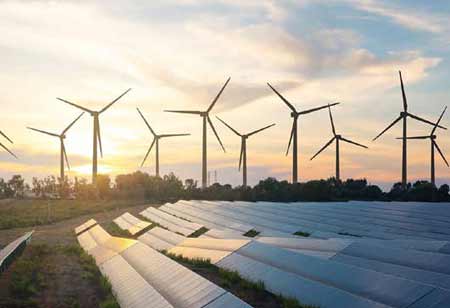

Thank you for Subscribing to Energy Business Review Weekly Brief

Not too long ago, the world seemed poised to forge full steam ahead to achieve ambitious emissions reduction goals. ‘Electrify everything’ dominated prominent policy and stakeholder initiatives, with plans to get to net zero through electric mobility and heat powered by offshore wind and solar. Fast-forward to today, and the rise of AI and the expansion of data centers have shifted the narrative. “Energy transition” becomes more like “energy addition” as we strive to meet our rapidly growing energy needs.
In other words, fossil fuels will continue to play a significant role for many decades to come, serving as a critical energy source for powering the grid, providing heating for homes and businesses, and fueling mobility across hard-to-abate industries. Meanwhile, policy shifts and financial uncertainties are prompting organizations to reconsider or pause development plans. As Abraham Lincoln famously remarked, “The best way to predict the future is to create it but be ready to adapt when the unexpected happens.” Moving toward a lower-impact environment is essential, but flexibility is the key to getting there due to challenges associated with cost and inadequate technology solutions for some sectors, not to mention the Time Value of Carbon. All the above approaches to decarbonization are prudent and necessary. If flexibility is the goal, compensated fuels seem to be a good option for the toolkit. They aren’t well defined, but some organizations refer to them as fossil fuels bundled with environmental attribute certificates such as voluntary carbon offsets (VCOs) or renewable energy credits (RECs). These include liquefied natural gas cargoes, refined products, and retail fuels like gasoline and heating oil bundled with offsets to reduce environmental impact. In a nutshell, compensated fuels are energy products paired with reductions or avoided GHG emissions that occur elsewhere to mitigate the environmental impact of the fuel. Environmental stakeholders prioritize insetting, avoiding and reducing emissions within the product value chain. It is not, however, always economically feasible or even possible in some cases to completely revamp supply chains and replace infrastructure. Bloomberg estimates the U.S. needs $800 billion annually by 2030 to prepare the grid for clean power and EVs, not including infrastructure replacement. Practically speaking, this change will not occur fast enough to achieve the shift many stakeholders seek. It will take decades. EIA projects that even by 2050, fossil fuels will still be utilized materially. This also matters due to the concept of the Time Value of Carbon. Earlier emissions reductions are worth more than later emissions reductions due to the cumulative impact of GHG emissions on the atmosphere over time. Using environmental attribute certificates helps accelerate earlier reductions and thus is a valuable tool that should be incorporated into supply chains.Compensated fuels offer a pragmatic path forward by bundling conventional energy products with environmental attribute certificates like carbon offsets and renewable energy credits to reduce their overall impact
I agree We use cookies on this website to enhance your user experience. By clicking any link on this page you are giving your consent for us to set cookies. More info

However, if you would like to share the information in this article, you may use the link below:
https://www.energybusinessrevieweurope.com/cxoinsight/jonathan-jw-hackett-nwid-1836.html